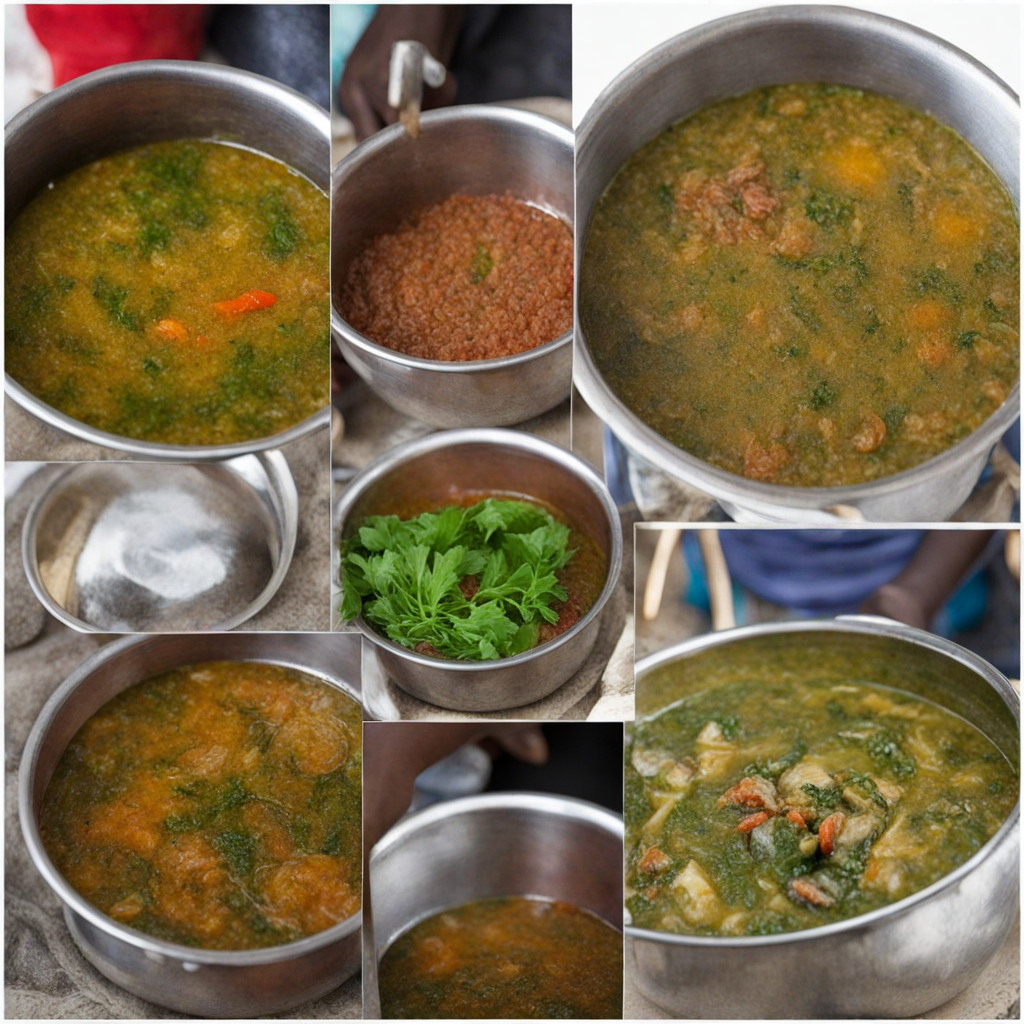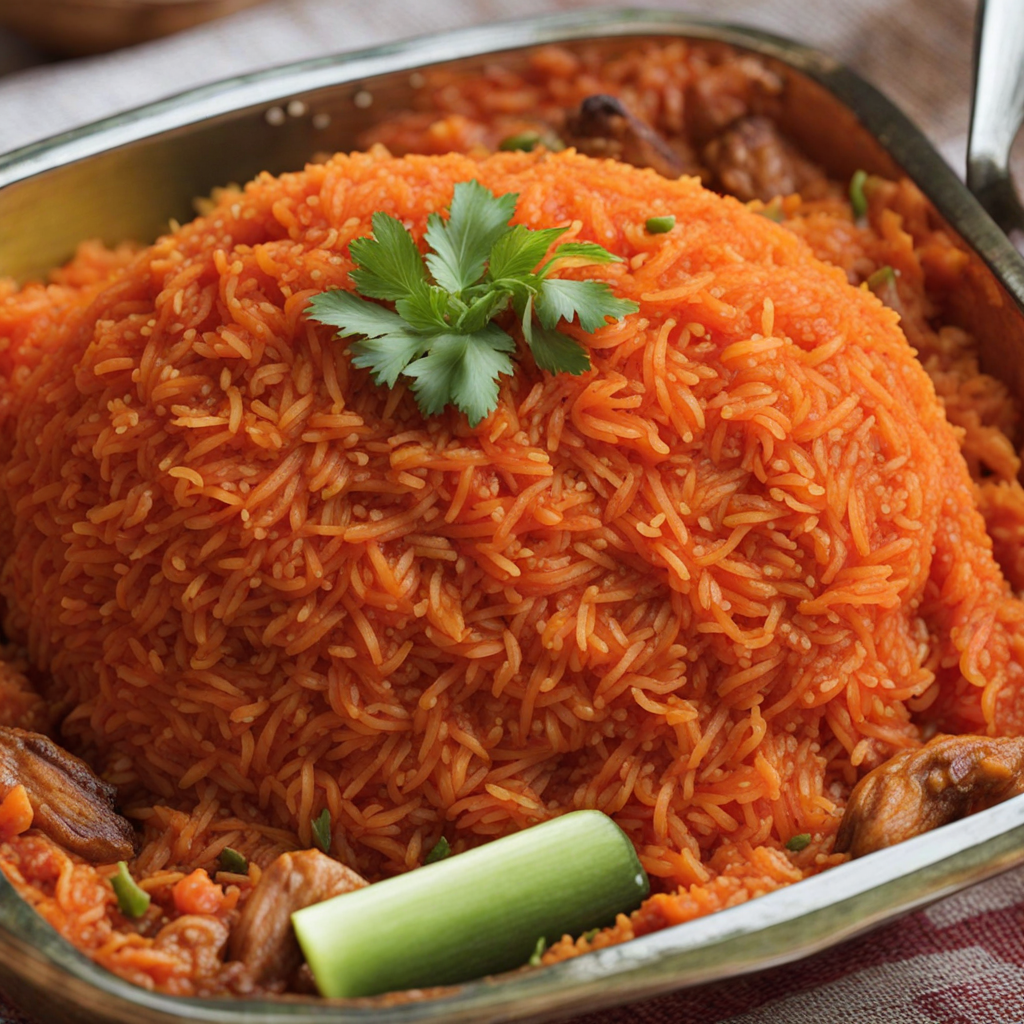Cuscuz
Cuscuz, a staple in Guinea-Bissau, is a delightful dish made from finely ground cornmeal or cassava flour, often flavored with spices and accompanied by a variety of ingredients. The preparation involves steaming the grain, which allows it to absorb moisture and become fluffy and light. This technique creates a versatile base that can be enjoyed in both savory and sweet variations. The texture is reminiscent of couscous, and it serves as a perfect canvas for the vibrant flavors of West African cuisine. In Guinea-Bissau, cuscuz is often paired with rich stews, grilled meats, or sautéed vegetables, allowing the dish to soak up the accompanying flavors. It is commonly enriched with palm oil, onions, garlic, and spices like chili and cumin, giving it a depth of taste that is both comforting and exciting. This dish beautifully embodies the fusion of indigenous ingredients and culinary traditions, making each bite a journey through the region's rich cultural heritage. For those looking to explore new taste experiences, cuscuz offers a unique combination of simplicity and complexity. It is often served alongside fresh salads or spicy sauces, enhancing its flavor profile and providing a refreshing contrast. As you savor each mouthful, you'll discover the warmth and hospitality of Guinea-Bissau's culinary traditions, making cuscuz not just a meal, but a celebration of community and culture.
How It Became This Dish
Cuscuz: The Heart of Guinea-Bissau’s Culinary Heritage #### Origins and Historical Context Cuscuz, a staple food in Guinea-Bissau and many parts of West Africa, has a rich history that reflects the region's diverse cultural influences and agricultural practices. The dish primarily consists of coarsely ground maize or corn flour, which is steamed to create a fluffy, light texture. While its exact origins are difficult to pinpoint, cuscuz has roots in ancient grain processing techniques that have been used for centuries throughout Africa. Historically, the cultivation of maize in Africa can be traced back to the arrival of Portuguese explorers and traders in the 15th century. They brought corn from the Americas, which eventually became a staple crop across many regions of Africa. In Guinea-Bissau, the availability of maize, combined with local agricultural practices, led to the development of cuscuz as a significant dietary component. The dish reflects the interplay of indigenous practices and those introduced by colonizers. Local communities adapted the preparation methods of their new staple, leading to the development of cuscuz, which became a symbol of nourishment and resilience. #### Cultural Significance Cuscuz is more than just a food item; it embodies the cultural identity of the people of Guinea-Bissau. Traditionally, it is served during communal gatherings, celebrations, and religious ceremonies. The preparation and sharing of cuscuz often involve family and community participation, reinforcing social bonds and cultural traditions. In Guinea-Bissau, cuscuz is often paired with various accompaniments, such as fish, vegetables, or stews made from meat, reflecting local culinary practices and regional flavors. This adaptability allows cuscuz to represent the local environment, showcasing the agricultural richness of the land. It is not uncommon to find cuscuz served alongside spicy sauces or flavored with palm oil, which adds depth to the dish and enhances its appeal. Moreover, cuscuz holds a place in the narrative of resistance and survival. During colonial times, the dish became a means for communities to maintain their identity amidst external pressures. By embracing and modifying traditional food practices, the people of Guinea-Bissau were able to assert their cultural heritage, ensuring the continued relevance of cuscuz in their daily lives. #### Development Over Time As Guinea-Bissau transitioned through various political and social changes, cuscuz remained a staple food that adapted to the evolving context. During the struggle for independence from Portuguese colonial rule in the 1970s, cuscuz served as a vital source of sustenance for fighters and civilians alike. Its easy preparation and nutrient-rich qualities made it an essential part of the diet during challenging times. In the post-colonial era, as Guinea-Bissau embraced its newfound independence, cuscuz became a symbol of national identity. Efforts to revive and promote local cuisine flourished, with cuscuz taking center stage. The government and various organizations began to recognize the importance of traditional foods in fostering national pride and supporting local agriculture. The culinary landscape of Guinea-Bissau has also been influenced by globalization and the introduction of new food technologies. While traditional methods of preparing cuscuz remain prevalent, innovations in cooking techniques and the availability of new ingredients have led to the emergence of diverse variations of the dish. For instance, the incorporation of different grains, such as millet or rice, has broadened the culinary possibilities, allowing for a fusion of flavors that reflect contemporary tastes. #### Cuscuz in Modern Guinea-Bissau Today, cuscuz continues to play an integral role in the culinary identity of Guinea-Bissau. Its versatility allows it to be served at breakfast, lunch, or dinner, often accompanied by a variety of toppings and sides. Street vendors and local eateries frequently feature cuscuz on their menus, showcasing regional variations that highlight the local ingredients and culinary practices. Cuscuz is also gaining recognition beyond Guinea-Bissau’s borders, as the global interest in traditional and indigenous foods grows. In international food festivals and culinary events, cuscuz has found its way into the spotlight, celebrated for its cultural significance and nutritional value. Chefs and food enthusiasts are exploring ways to incorporate this West African staple into modern cuisine, introducing it to new audiences while honoring its rich heritage. The dish has also become a symbol of food sovereignty, reflecting the importance of local food systems and the preservation of traditional agricultural practices. Movements advocating for sustainable agriculture and the protection of indigenous crops often highlight cuscuz as a prime example of how traditional foods can contribute to community resilience and food security. #### Conclusion Cuscuz is not merely a dish; it is a living testament to the history, culture, and identity of the people of Guinea-Bissau. Its origins rooted in the agricultural practices introduced through colonialism, its cultural significance as a symbol of community and resilience, and its evolution in the face of modern challenges showcase the profound connection between food and identity. As Guinea-Bissau continues to navigate the complexities of globalization and cultural exchange, cuscuz remains a steadfast emblem of the nation’s culinary heritage. It is a dish that not only nourishes the body but also feeds the spirit, celebrating the rich tapestry of traditions that shape the lives of its people. The future of cuscuz is bright, promising continued exploration and appreciation of its role in both local and global contexts, ensuring that this cherished food remains at the heart of Guinea-Bissau’s culinary narrative for generations to come.
You may like
Discover local flavors from Guinea-bissau







